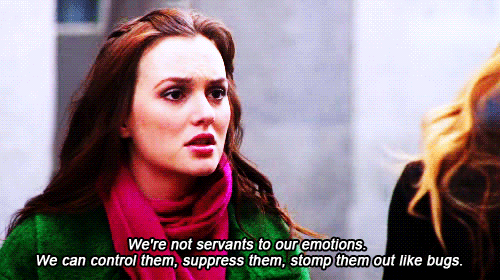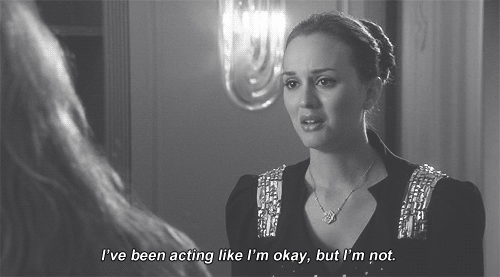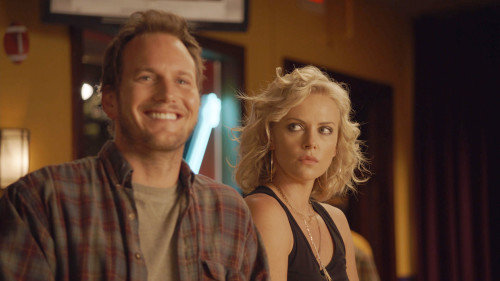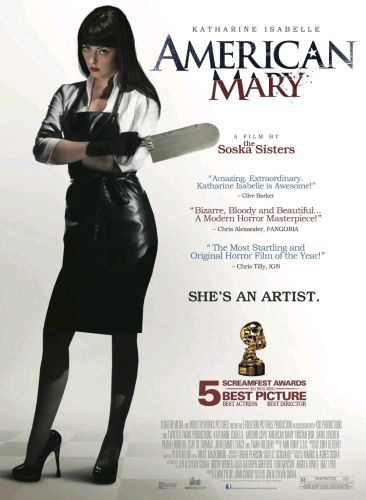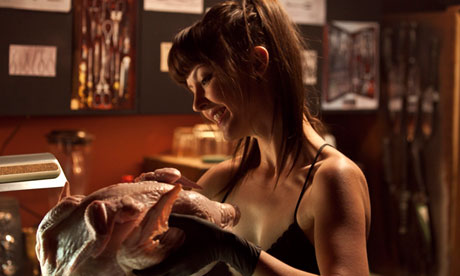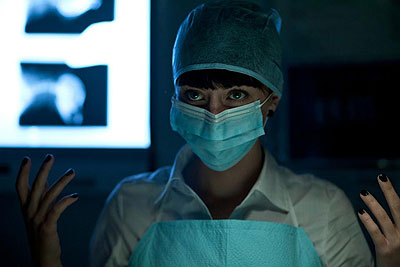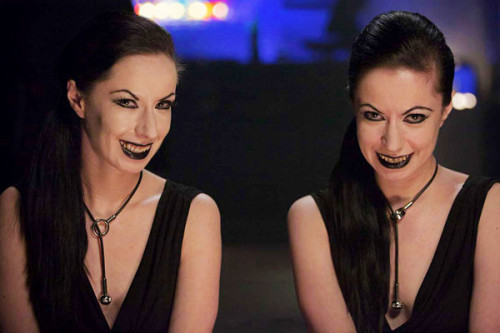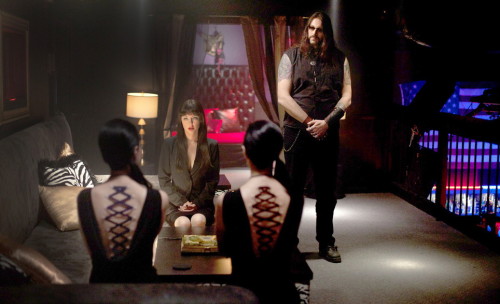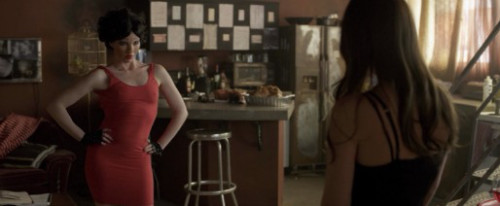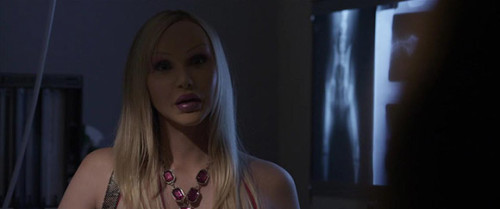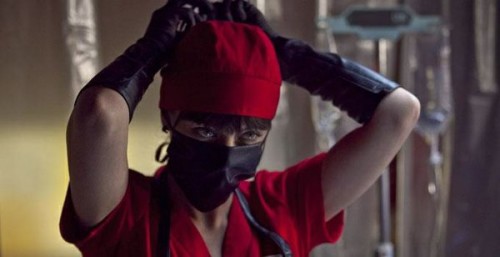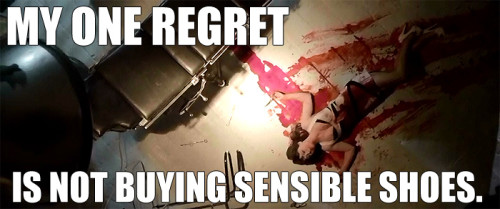This guest post by Vanessa Willoughby appears as part of our theme week on Unlikable Women.
Blair Waldorf, the spoiled, plotting socialite of the CW’s Gossip Girl, is not your typical high school student. This Upper East Side Queen Bee is not a relatable character, nor as literary critics would say, a reliable narrator. Competitive by nature, Blair moves through New York City’s elite social world with the shrewd cunning of a cutthroat and cynical business titan. Despite her poised exterior, Blair is initially presented as the eternal underdog to her best frenemy, the free-spirited Serena van der Woodsen.
Yet during its six-season run, fans of the show rooted for Blair as though she were Scarlett O’Hara—a stubborn anti-heroine with grandiose dreams that often clashed with self-destructive desires. In order to catapult Blair from an emotionally flat, cardboard-cutout Mean Girl into a multi-faceted character, she is someone whose deep insecurities and anxieties are nearly equal to her undeniable beauty and privilege. Unlike Serena, who seems to always benefit from some higher source of convenient luck, Blair struggles with her looks, most notably her body image.
Cecily von Ziegesar, author of the series used for the basis of the show, says in a profile with New York Magazine, “I always resented books that tried to teach a lesson, where the characters are too good: They don’t swear, they tell their mothers everything…I mean, of course I want to be the responsible mother who says, ‘Oh, there are terrible repercussions if you have sex, do drugs, and have an eating disorder!’ But the truth is, my friends and I dabbled in all of those things. And we all went to good colleges and grew up fine. And that’s the honest thing to say.” Gossip Girl may exude the flamboyance of a melodramatic soap opera but the character of Blair Waldorf still manages to embody the familiar woes and hangups of a recognizable teenage girl.
Like many teenage girls who feel that they are never enough as they are, Blair constantly searches for a version of her best self that always eludes her grasp. It’s fitting that Blair’s role models are Audrey Hepburn and Grace Kelly. These iconic actresses, with their regal beauty, trademark style aesthetics, and air of worldly sophistication, reflect Blair’s need to merge her perception of femininity with a quiet yet commanding power. Does she pull this off? Her friendship with Serena, which can easily swing from loving to toxic, exposes her vulnerabilities. Her perfectionism merely functions as a coping mechanism. In season one, episode nine, “Blair Waldorf Must Pie!,” viewers learn that Blair is bulimic. After facing a dysfunctional and stressful Thanksgiving, she resorts to binge-eating and then making herself throw up. She may not be able to control every aspect of her life as though she were a Hollywood director, but she can control her relationship to food. As the seasons progress, Blair’s bulimia is not treated as her defining characteristic or the foundation of her identity.
When discussing the role of the unlikable female protagonist in an essay for Buzzfeed, Bad Feminist author Roxane Gay notes, “These novels [Gone Girl, Dare Me] depict women who are clearly not participating in their narratives to make friends and whose characters are the better for it. Freed from the constraints of likability, they are able to exist on and beyond the page as fully realized, interesting, and realistic characters.”
In the case of Blair Waldorf, her narrative begins with a power struggle between herself and Serena, her childhood partner in crime. When Serena returns home to Manhattan after attending boarding school in Connecticut, Blair’s natural instinct is to panic. Her relationship with Serena is bound by equal parts jealousy and mafia-level loyalty. Serena’s return means that Blair will be stripped of her title as Constance Billard’s Queen Bee. Blair learns that Serena slept with her boyfriend, Nate Archibald, right before Serena shipped out of Grand Central Station. She turns against Serena and commands her newly-appointed court to do the same. Blair is not depicted as the Girl Next Door; in fact, it’s a label that Blair would find a bit insulting due to its implications of commonality. If anything, Serena, with her heart of gold and It Girl charm, is the one who is pushed as likable. Blair is a character that is free from the constraints of likability, but her power-hungry and slightly paranoid motivations, however selfish, do not make her lifeless or cartoonish. Blair’s rocky relationship with Serena prevents her from serving as the resident villain. On the contrary, it emphasizes her weaknesses.
The social pecking order of Gossip Girl revolves around class, rather than outright wealth. Echoing the conflicts of an Edith Wharton novel, the female protagonists exist in a familiar yet distorted version of New York. Blair’s vulnerabilities include her see-sawing feelings toward Serena and her tendency to make decisions shaped by the promise of social-climbing or revenge. Ultimately this pushes her into the arms of Chuck Bass, Nate’s best friend. For some viewers, Chuck and Blair’s courtship of mindgames and manipulation were reason enough to call the pairing and Blair unlikable, to say the least. But unlikable doesn’t have to constitute unwatchable or monstrous.
In an interview with the New York Times, Gillian Flynn says, “The likability thing, especially in Hollywood, is a constant conversation, and they’re really underrating their audience when they have that conversation. What I read and what I go to the movies for is not to find a best friend, not to find inspirations…It’s to be involved with characters that are maybe incredibly different from me, that may be incredibly bad but that feel authentic.”
Despite the extremes of Chuck and Blair’s battle tactics, which include marrying a Prince (Blair) and a deep-seated aversion to commitment (Chuck), their relationship has the same Will they or won’t they? curiosity in the same vein as Heathcliff and Cathy in Wuthering Heights or Carrie and Big in Sex and the City. Blair and Chuck breakup only to reunite, both infused with a sense of fragile pride that is also a vice. Their antics aren’t aspirational. At one point, Chuck “sells” Blair in order to keep his father’s hotel empire. In a conversation with the New Yorker, Margaret Atwood, in response to the question of the likable female character says, “This does still come up. It is indeed a ridiculous question. The qualities we appreciate in a character are not the same as those we would look for in a college roommate.”
None of the characters are exactly the type you’d want for a college roommate. Even Dan Humphrey, the Brooklyn “Outsider,” is not as morally pure as he’d like to believe. He’s just as snobby and self-righteous as Blair, thus making it a surprising yet believable turn of events when they later get together in season four. Regardless, it’s Blair, with her determination, her ability to swiftly flip the switch from charming to threatening, who makes a much more interesting and compelling character than Golden Girl Serena. Edan Lepucki writes for The Millions, “But what if a character isn’t Unlikeable, but unlikeable? What if you just didn’t like him or her? That’s a valid personal response, and certainly a good a reason as any to stop reading. But it’s such a personal response that it’s irrelevant to the critical gaze.” We don’t have to like Blair in order to root for the success of her schemes or even feel sympathy for her self-induced conflicts.
What made Gossip Girl and Blair Waldorf interesting was not the character’s attempts to achieve role model status. The fact that fans of the show that identified with Blair may have even misinterpreted the message or lack thereof. Emily Nussbaum when writing about The Mindy Project observes, “Female viewers, especially, have been trained to expect certain payoffs from romantic comedies, vicarious in nature: the meet-cute, the soul mate, and, in nearly every case, a ‘Me, too!’ identification. Without ‘Me, too!,’ some folks want a refund.” Blair, in all of her messy contradictions and complexities, would lose what makes her fascinating if she were written to be likable.
Vanessa Willoughby is a writer and editor. Her work has appeared on The Toast, The Hairpin, Thought Catalog, and other print and online publications. Find her @book_nerd212.

